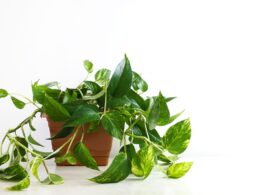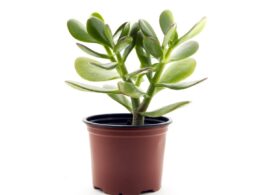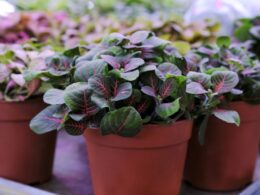What Is Agave? Species, Origins and Traits
Agave is a genus of over 200 species of succulent plants native to the hot, dry climates of the Americas. Because of their origins, proper agave plant care means providing them with a warm and dry environment.
The most well-known agave is probably Agave americana, commonly known as the century plant, maguey, or American aloe. This agave species is native to Mexico and the United States. It can reach 30 feet tall when in bloom and spreads 10 feet wide. Other widely cultivated agaves are:
- Agave angustifolia, native to Mexico and Central America;
- Agave tequilana (tequila agave or blue agave), native to Mexico;
- Agave attenuata (swan’s neck agave), native to Mexico;
- Agave parviflora (small-flower agave), native to Arizona and Sonora;
- Agave victoriae-reginae (royal agave), naturally growing on the Chihuahuan Desert.
Agaves are characterized by their rosette shape, with thick and fleshy leaves that store water for the plant to survive in its hot and dry habitat. The agave plant’s flowers grow on a tall spike, which can reach up to 20 feet in height.
Agave Plant Care – Soil Type and Fertilizer
The first step in agave plant care is choosing the right planting site. Agaves need well-draining soil, so that their roots don’t rot. A cactus potting mix or a mixture of sand, perlite, and peat moss will work well. You can also add some gravel to the bottom of the pot to help with drainage.
When it comes to fertilizer, agaves need very little. In fact, too much fertilizer can encourage your agave to bloom, which it will do just before dying. A yearly dose of low-nitrogen, slow-release fertilizer should be safe.
Agave Plant Care – Watering
As desert plants, agaves don’t need a lot of water. In fact, too much water can kill them. Allow the soil to dry out completely before watering your agave plant. During the winter months, you can reduce watering even further.
The only time you need to water your agave more often is right after planting. For the first month, before it develops a strong root system, water it every 5 days.
How Much Light Agaves Need
In their natural habitat, agaves grow in full sun. They can also tolerate light shade, but they won’t grow as large. When growing agaves indoors, choose a spot that receives bright light. An east- or west-facing window is ideal. If you don’t have a spot that gets enough light, you can supplement with grow lights.
Ideal Temperatures and Humidity for Agave Plants
As desert plants, agaves are used to hot and dry conditions. They prefer temperatures above 65 degrees Fahrenheit during the day, and no lower than 55 degrees at night. If the temperature drops below 50 degrees, agave plants will go dormant and stop growing until it gets warmer. Most species are hardy to USDA zones 9 and above.
Agaves don’t like high humidity, so they’re a good choice for homes that tend to be on the dry side. They can tolerate some humidity, but too much will cause their crown to rot.
Pruning Agave Plants
Pruning is an important part of agave plant care. As agaves grow, they can become top-heavy and fall over. However, you shouldn’t trim healthy leaves, or the entire plant may die back to the ground. Only remove spent flower stalks, as well as any damaged or dead leaves.
How to Propagate Agaves
If you want to grow more agaves, the easiest way to do it is by offsets, or pups. These are small plants that form around the base of the main plant. To remove an offset, simply cut it away from the parent plant with a sharp knife. Once it’s removed, allow it to callous over for a few days before potting it up.
Repotting Agave Plants
Agaves need to be repotted every year. Choose a pot that’s only one size larger than the current one. Be sure to use a well-draining potting mix, as agaves don’t like wet feet. Make sure the crown is above the soil line to prevent it from rotting.
If you live in an area where agaves are not winter-hardy, you’ll need to bring your plants indoors for the winter months. Begin indoor agave plant care with gradually reducing the amount of sunlight they get. Then, repot them and put them in a bright spot indoors.
Common Problems with Agaves
One of the most common problems with agaves is root rot. This can be caused by too much water or poor drainage. If you think your agave has root rot, lift it out of the pot and check the roots. If they’re mushy or black, cut them away with a sharp knife. Then, repot the plant in fresh potting mix.
Fungal diseases like anthracnose and leaf spot can also affect agaves. These are usually caused by too much humidity or not enough light. If you notice any spots on the leaves, remove the affected leaves and increase air circulation around the plant.
Last but not least, agave snout weevil can be a problem, especially for outdoor plants. These pests burrow into the agave’s crown, causing it to rot. If you notice your agave’s leaves starting to wilt, check for weevils. Remove any affected leaves and dispose of them.
Agave Plant Toxicity
Agaves are considered to be mildly toxic, as their sap contains calcium oxalate, which causes skin irritation. Symptoms range from blisters to swelling. If you have any agave plants that are not winter-hardy, make sure to keep them out of reach of children and pets.
Now you know all about agave plant care! With proper attention, these plants can thrive indoors for many years.
What are your tips for growing agaves? Share them in the comments below!



















